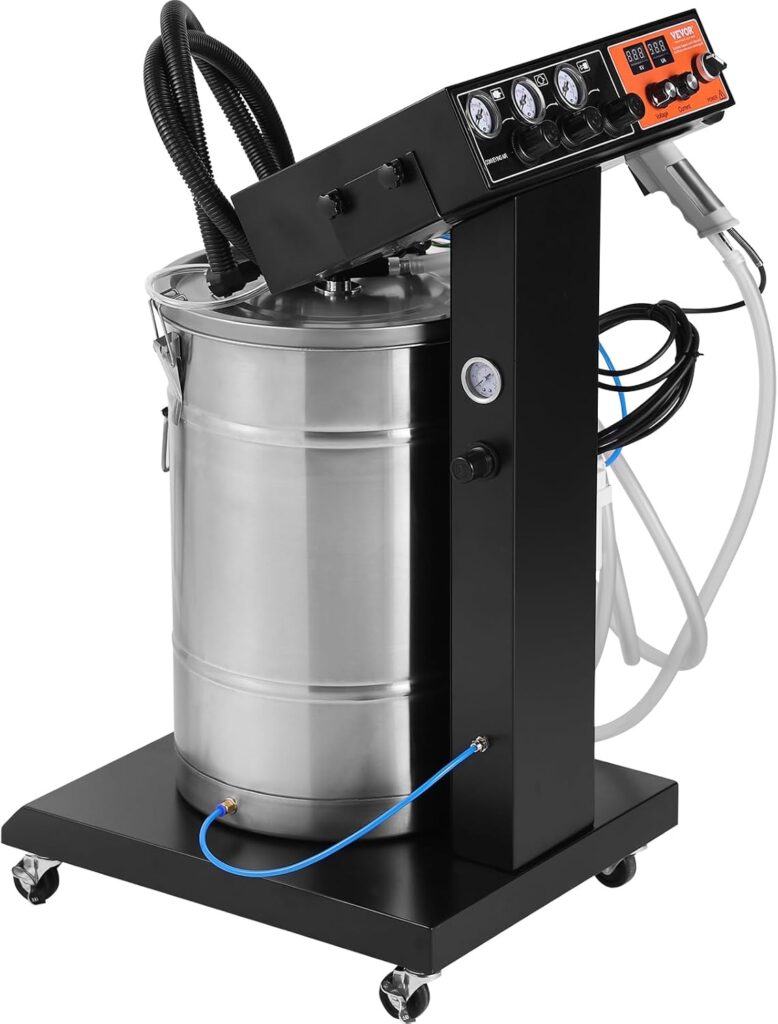Making things look flawless with a powder coating finish takes more than just pushing a button. Behind every smooth, durable surface is a set of precise metrics that keeps your powder coating machine running at top performance. Understanding these quality benchmarks isn’t just for engineers—it’s for anyone who wants long-lasting results that don’t crack, fade, or peel over time.
Cure Consistency Validation Using Differential Scanning Calorimetry
Cure consistency is a critical indicator of whether your coating is more than just good-looking. Differential Scanning Calorimetry (DSC) provides detailed thermal analysis that measures how the powder cures under controlled heat exposure. By analyzing the heat flow into the material, this test reveals the curing rate and whether the chemical cross-linking has reached its full potential.
For operators, this is a huge win. It means no second-guessing whether the settings are right or if environmental shifts are messing with performance. A powder coating machine that’s been optimized based on DSC data ensures predictable curing across multiple batches, reducing rework and helping production stay on schedule.
Particle Size Distribution Checks for Optimal Finish Coverage
Powder coatings may look like simple color in a bottle, but the particle size within the mix directly influences how that finish lays down. If the particle size distribution is too wide, coverage becomes inconsistent, with some spots appearing blotchy or grainy. Uniform particle sizing allows even spray dispersion, stronger electrostatic attraction, and smoother finishes with fewer touch-ups required.
Monitoring particle size also prevents issues with build thickness. A quality powder coating machine delivers consistent airflow and spray output, but it works best when paired with powder that’s within spec. Proper particle analysis is the unseen step that helps prevent common coating defects before they start, saving both material and time.
VOC Emission Measurements to Meet Regulatory Standards
While powder coatings are praised for low volatile organic compound (VOC) emissions, they aren’t always zero. Tracking VOCs is still necessary—especially if additives or hybrid coatings are used. Measuring emissions allows operations to stay within safety limits set by local and federal regulations.
VOC benchmarks also offer insight into whether your powder coating machine is operating efficiently. Higher emissions can signal overuse of certain components or poor airflow design. Regular testing confirms the machine setup is eco-conscious and aligns with today’s environmental expectations in industrial finishing.
Transfer Efficiency Evaluations Through Powder Deposition Rates
How much powder actually sticks to the surface? That’s where transfer efficiency becomes a key benchmark. It measures how effectively the powder coating machine applies material to a part versus how much ends up wasted. A high transfer efficiency reduces powder loss, cleanup time, and overall cost.
By evaluating deposition rates, operators can fine-tune spray angles, gun settings, and airflow to get more out of each pound of powder. Better transfer efficiency doesn’t just save money—it also leads to more consistent film builds and faster throughput. It’s a fine balance between material savings and perfect finish quality.
Surface Resistivity Testing for Electrostatic Application Efficiency
Electrostatic application is what allows powder to cling to metal parts so well. But it doesn’t just happen—surface resistivity plays a big part in how powder behaves once it leaves the gun. A surface that’s too conductive or not conductive enough can throw off deposition and lead to uneven coating.
Surface resistivity testing ensures the part’s surface is prepared correctly for the electrostatic process. This test gives data that helps technicians adjust pre-treatment or grounding methods. A powder coating machine performs better when resistivity levels are understood and factored into application methods, leading to more reliable coverage on the first try.
Thermal Uniformity Mapping for Consistent Batch Outcomes
Even heat distribution is essential for making sure coatings cure evenly across the entire part. Thermal mapping identifies temperature differences across the heated zone and helps verify whether the process delivers consistent curing conditions from one batch to the next.
Without thermal uniformity, you may see variations in gloss, adhesion, or durability—even within the same batch. Detailed mapping helps technicians catch these issues early and adjust airflow, spacing, or part positioning. For a powder coating machine to operate at its best, it needs an environment with dependable thermal balance.
Impact Resistance Ratings to Confirm Coating Durability
Once the coating looks perfect, it still needs to hold up against wear and tear. That’s where impact resistance testing comes in. This benchmark measures how well the coating can absorb a hit without cracking, peeling, or delaminating. It’s not just for heavy-duty parts—nearly any coated surface benefits from strong impact ratings.
A well-maintained powder coating machine, paired with the right application settings, helps produce finishes that score higher on impact tests. These ratings serve as long-term quality indicators, letting customers know they can trust the finish to stay put under real-world use. In the end, performance means more than appearance—and impact resistance helps prove it.
Read also: techinfobusiness.com



